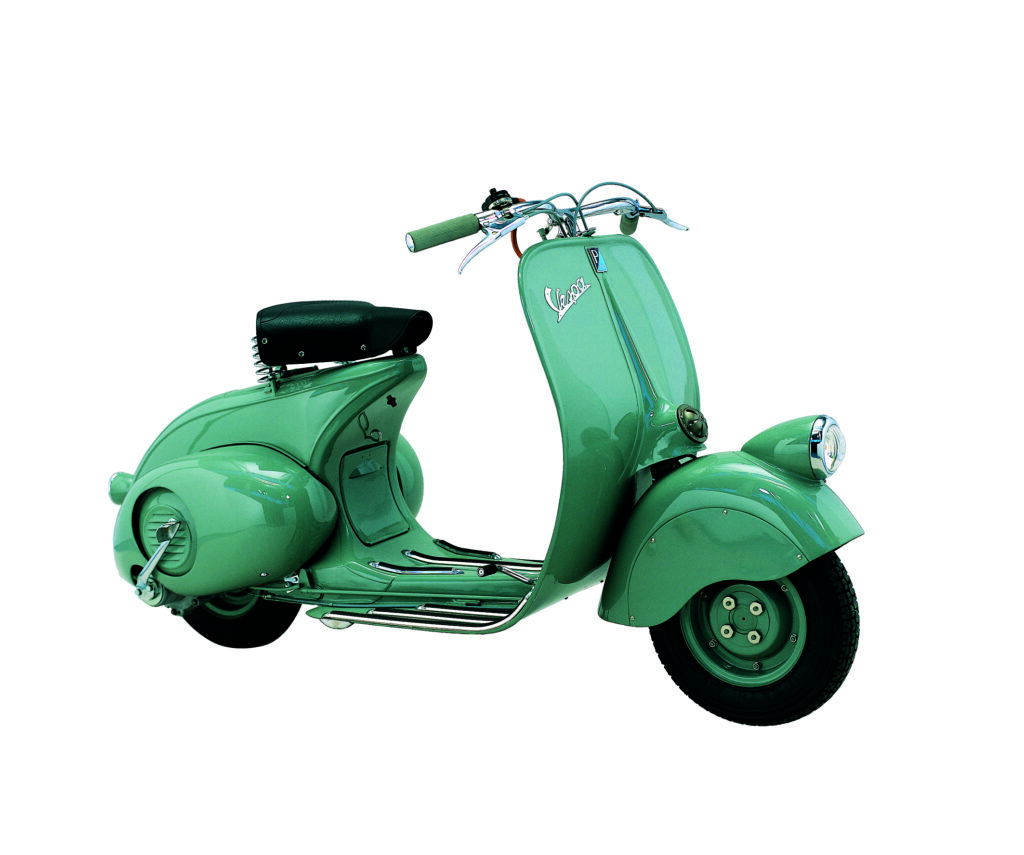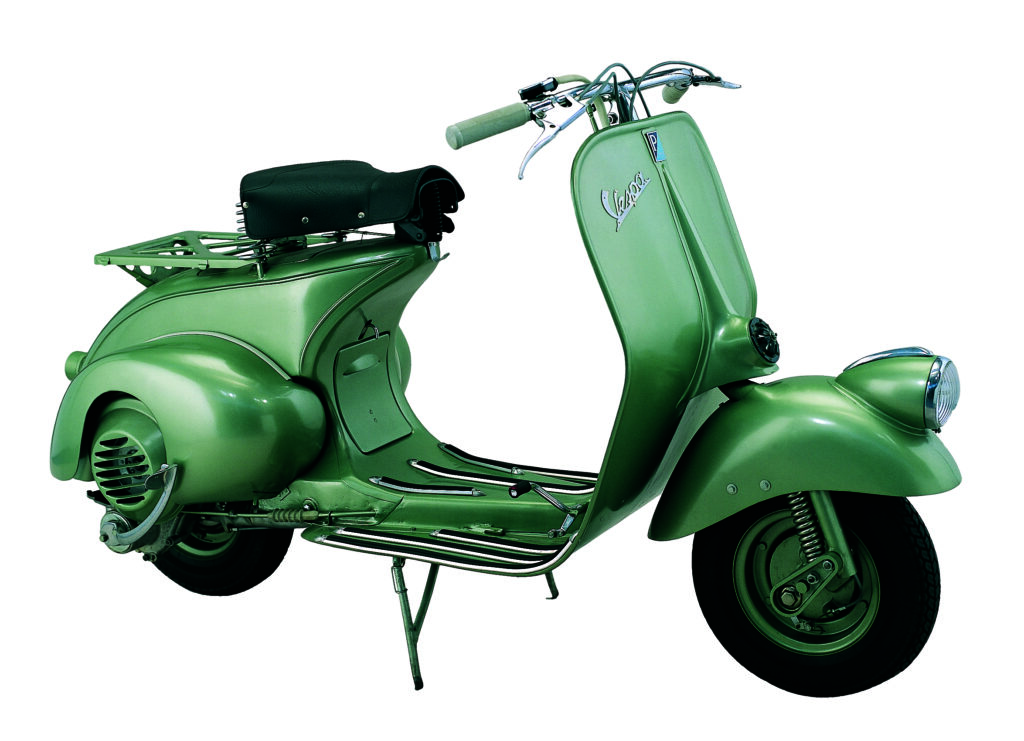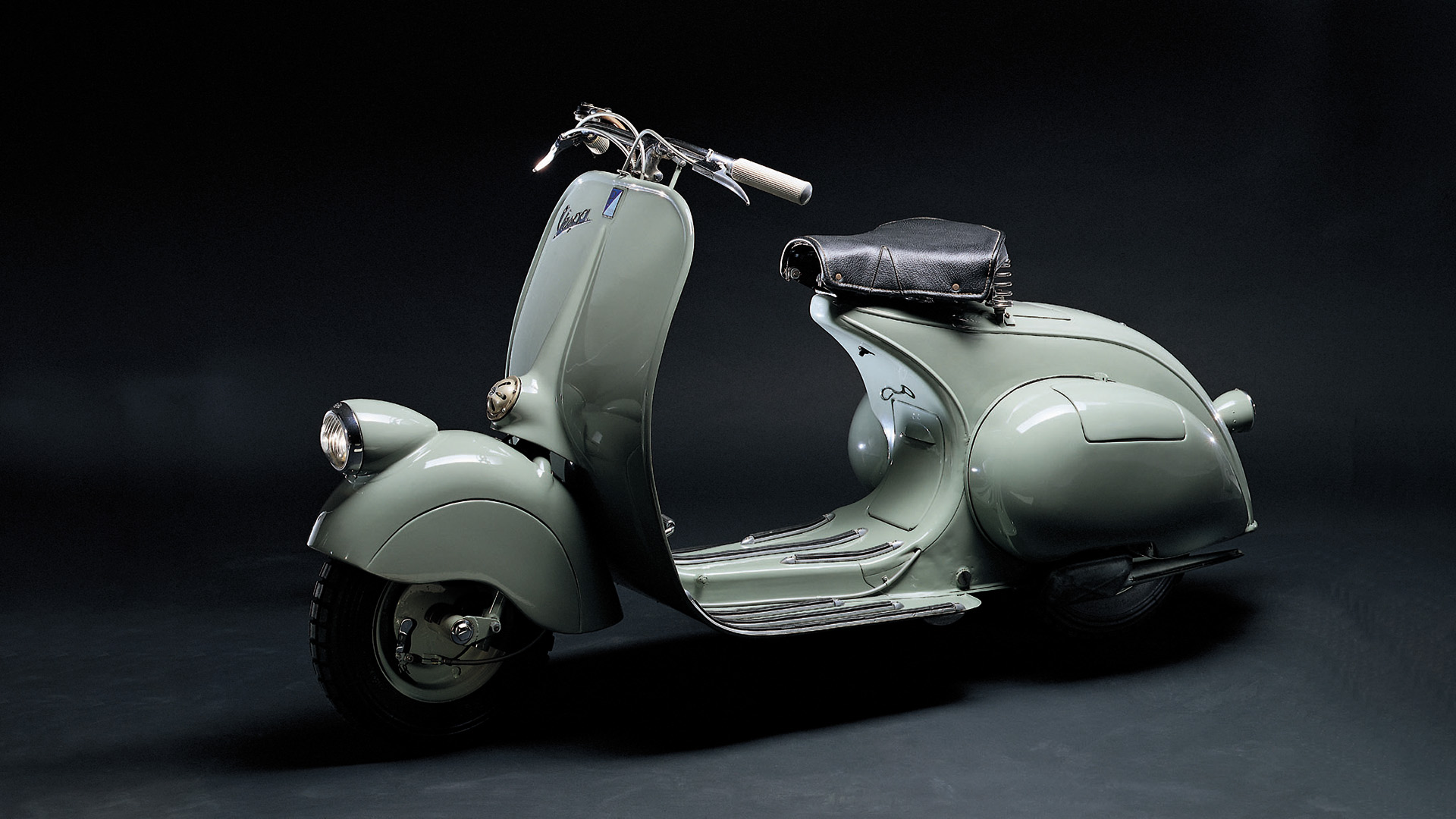The Vespa 98 – with it began in 1946 the legendary rise of an icon that has continued to this day. It is the first series-produced scooter of the Italian manufacturer Piaggio. The mother of all Vespas, the original Vespa, so to speak, the V 98.
A wideframe model based on the prototypes Paperino – translated “duckling” – (or MP5) and MP6, developed according to the ideas of designers Corradino D’Ascanio (former engineer of war aircraft with dreams of designing helicopters) and his colleague Enrico Piaggio. It was Enrico Piaggio who eventually commissioned the engineer D’Ascanio to develop/implement his ideas.
It is easy to imagine how at that time – shortly after the end of the 2nd World War – there was a desire for an inexpensive and practical means of transport that would not be affected by the war-torn roads. It started from a seated human being, around whom the technology of the new two-wheeler was to be built.
Simple, economical and easy to ride
This motto formed the basis for the next few years and associated developments.
On April 23, 1946, the name Vespa was officially registered for patent. Viewed from above, the vehicle certainly resembled the shape of an insect with a slender waist – thus the name Vespa was born.
It had a displacement of 98 cm³, which, with a power output of only 3.2 hp, still managed to get 60 km/h on the track. The machine was equipped with a three-speed gearbox. The drive and power transmission were to be designed as simply as possible. In addition, the existing production facilities in Pontedera (near Pisa) were to be used for the construction of the two-wheeler.
Thus, the designer opted for a short swingarm at the front and a drive-set swingarm at the rear (without secondary chain), especially since a chain drive was impossible in the emergency times of the time due to a lack of materials.
This simple design basis has been largely retained to this day, as has the free step-through, which is characteristic of the Vespas of all future models.

The Vespa 98 was divided into 4 different series:
- the V. 98/1 with a uniformly curved leg shield
- the V. 98/2, this version got the characteristic leg bend, up to this model the mudguard was removable (for easier tire change)
- the V. 98/3, from this model on the scooter got an additional bracket for a speedometer, furthermore the fender became much slimmer
- the V. 98/4, thus all model variants of the Vespa 98 received only insignificant modifications
All 4 models had no main stand. For it from the footboard right and left outriggers protruded, on which the two-wheeler could be leaned.
For all necessary spare and add-on parts for the Vespa 98 is worth a look in the SIP Scootershop.
Technical data of the Vespa 98
- Production period from 1946 to 1947
- Single cylinder two-stroke engine
- Power 3.4 hp at 4500 rpm
- Displacement 98 cm³
- Top speed max. 60 km/h
- Gearbox 3-speed manual
- Drum brakes front and rear
- Wheelbase (mm) 1170
- Unladen weight 60 kg
- Predecessor model Vespa MP6 (prototype)
- Successor model Vespa 125
Successor model Vespa 125

Based on the Vespa 98, this model got a 125 cc engine, the band springs of the Vespa 98 became coil springs on the front swingarm.
The circular downward opening on the 98 model, so that the engine could swing, was replaced by rear wheel suspension. The saddle also underwent an improved suspension.
The carburetor received a choke hidden under the saddle.
With the year 1957 Large-Frame was born, which also meant the end of the headlight sitting on the fender. From now on, the chassis of the two-wheeler consisted of two sheet metal halves welded longitudinally (more rational production process), the left half giving its new home to the engine, while the right one incorporated the cooling air duct.
And last, but not least, the handlebars were also completely redesigned.
With this machine 4,5 PS/4500/min produced a top speed of 70 km / h after all.
In the SIP Scootershop gives also for the Vespa 125 spare parts, which can prepare the old crate again new momentum.
Good to the one who can still call such a two-wheeler his own. It should be guarded with Argusaugen and kept with good care in shot, as far as still possible. Worldwide enthusiasts would pay prices that need not hide.



Customer service was super helpful in guiding me to the right accessories for my Jupiter.